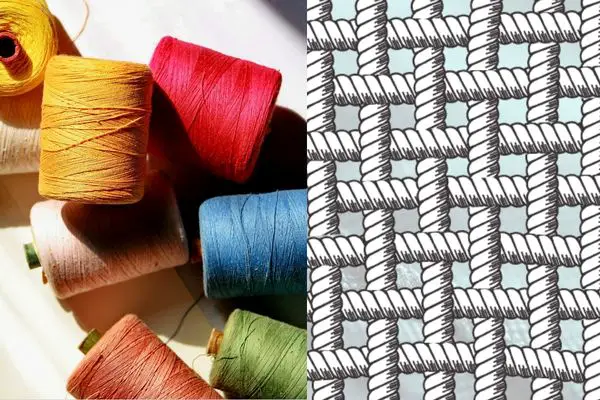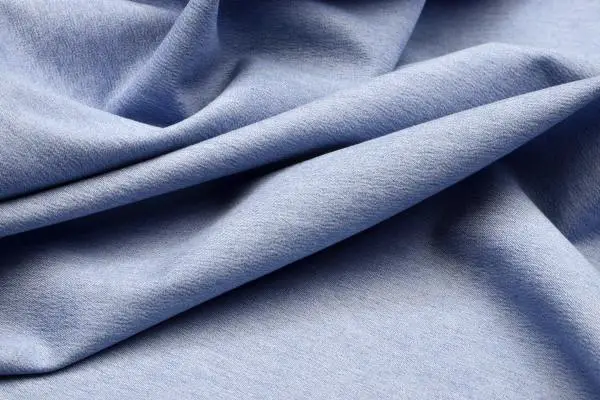The apparel industry is always looking for ways to improve the performance of their products. One of the latest innovations in fabric technology is polyamide.
Polyamide is the group of fabrics to which nylon belongs and has been used for industrial purposes since the late 1800s, but it has only recently become popular with outdoor brands thanks to its breathability properties.
We designate a fabric as breathable when it allows moisture vapors and other elements to pass through it so they don’t build up and cause unpleasant odors or sweat on your skin.
Polyamide is breathable because it allows moisture vapor to pass through it easily.
When you are in a hot, humid environment, sweat-producing pores on your skin can increase the amount of moisture reaching your undergarments; polyamide allows this moisture vapor to escape before it causes problems. Therefore, polyamide is also known as a natural air permeable (AIPP) fabric.
Contents
Polyamide and its application in apparel manufacturing
Polyamide, historically used for industrial purposes, has only recently found its way into outdoor apparel production. Currently, it is most commonly utilized in wicking fabrics like the fabric used in technical clothing and base layers.
Polyamide is also the preferred fabric for swimwear because it allows moisture to easily escape from the body without absorbing it. In addition to its breathability properties, polyamide also has excellent elasticity and durability.
This makes it a good choice for sports apparel since it can stretch and rebound without compromising quality or performance.
Polyamide also has high abrasion resistance which makes is suitable for hiking and trekking and other outdoor activities.
What makes polyamide breathable?
One of the key factors that make polyamide breathable is the use of short-staple fibers. Short-staple fibers are more porous than long-staple fibers and are less likely to absorb moisture and other unwanted substances.
Another reason polyamide is breathable is because it’s laminated on both sides with another fabric material, like cotton or another synthetic fiber. Chemically bonding fabrics together allows for the passage of water vapor, which makes the fabric more breathable.
Polyamide also has a high air permeability rate (ARP). ARP refers to how well a fabric can allow air to pass through.

How much air can pass through a fabric determines whether or not your body will have enough oxygen to function properly when you’re exercising or working hard at physical labor. Polyamide has an ARP of 0.81, which is higher than other similar fabrics such as Coolmax, C4Flex and CVC.
How do you determine if a fabric is breathable?
There are different ways to determine if a fabric is breathable. One way is to test it by simulating the conditions of a hot, humid environment. Another method is to see what happens when you pour water on it.

The water will bead up and roll off if the fabric is breathable. Polyamide is also waterproof because it has very strong fibers that can prevent moisture from passing through.
This makes polyamide less likely to become damaged or stained because the moisture cannot penetrate the fabric, which prevents stains and odors from building up on your garment over time.
Breathability test for clothing
When purchasing a garment, you might want to consider the breathability test. This is a process that determines how easily moisture vapor can pass through fabric.
The test involves placing a twenty-centimeter square of the fabric in an oven and heating it up to its boiling point. Next, a block of ice is placed on top of the fabric and it’s left in the oven for two minutes so it melts and condenses on the textile surface like sweat.
The fabric is then removed from the oven and allowed to cool off overnight in a breathable chamber. The next day, when it’s re-tested, it will have absorbed about one milliliter of water per square meter of material.
This amount of water is not enough for your body to feel uncomfortable or for bacteria to grow because there are no cells or other microorganisms that can withstand such high temperatures and pressures.
So if this test comes back with less than one milliliter per square meter at 22 degrees Celsius, then you know that your clothing is breathable because it allows moisture vapor to escape easily – just like polyamide should!
Benefits of Polyamide Breathable Fabric
Polyamide is a breathable fabric, so it allows moisture to escape. This can help prevent sweat and odors from building up on your skin and affecting the performance of your clothing. Another benefit of polyamide is that it’s water-resistant.
So, you don’t have to worry about getting splashed in the rain or snow. Your polyamide garment will also dry faster and stain less since it helps to evaporate moisture molecules quickly.
Polyamide also has some antibacterial properties because they repel bacteria, which can cause odor and disease growths in clothing fabrics.
Disadvantages of Polyamide Breathable Fabric
Polyamide is not a perfect solution as there are certain factors that can cause discomfort. For example, polyamide fabric can leave behind a waxy feeling if it’s too hot or it can feel sticky if you sweat heavily.
Also, polyamide doesn’t provide much protection against wind and water. Another disadvantage of polyamide is its susceptibility to pilling. Pilling happens when the yarn starts to fill with lint and fuzz from rubbing against other fibers in your clothing.
This problem can become more problematic when you wear polyester base layers underneath polyamide fabrics; the polyester fibers will grab onto the yarn in the polyamide fabric and create an uneven texture that looks like lint balls.
In addition, this texture will be a lot less noticeable when wearing natural fiber clothing because natural fibers are more forgiving of irregularities.
Conclusion
Polyamide, or nylon, is a common material used in manufacturing of clothing. The material is lightweight, durable, and has the ability to resist moisture and other materials. However, it isn’t breathable.
Polyamide is a close cousin of Lycra. It is a super stretchy material that has been used for decades in manufacturing of apparel. There are several other types of nylon that are used in manufacturing, including some that are breathable.




